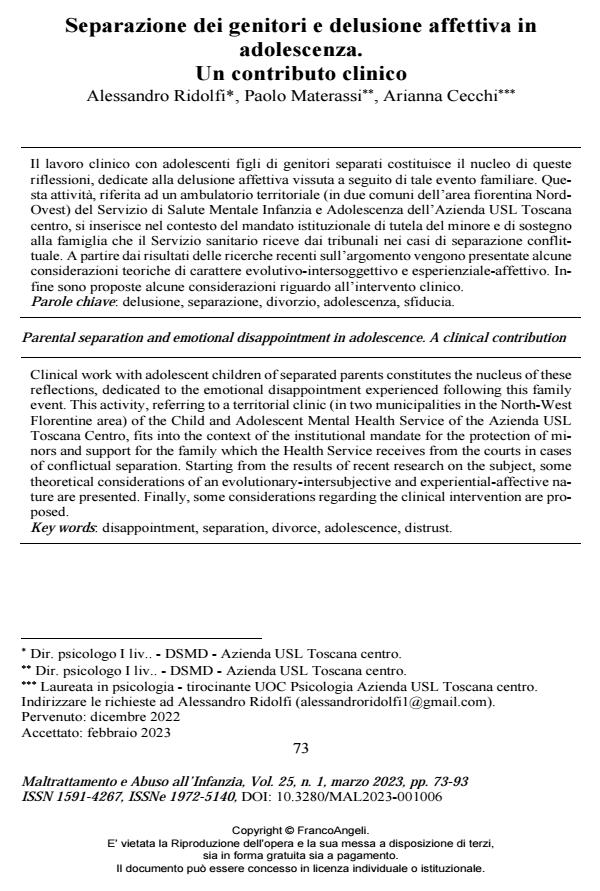Parental separation and emotional disappointment in adolescence. A clinical contribution
Journal title MALTRATTAMENTO E ABUSO ALL’INFANZIA
Author/s Alessandro Ridolfi, Paolo Materassi, Arianna Cecchi
Publishing Year 2023 Issue 2023/1
Language Italian Pages 21 P. 73-93 File size 221 KB
DOI 10.3280/MAL2023-001006
DOI is like a bar code for intellectual property: to have more infomation
click here
Below, you can see the article first page
If you want to buy this article in PDF format, you can do it, following the instructions to buy download credits

FrancoAngeli is member of Publishers International Linking Association, Inc (PILA), a not-for-profit association which run the CrossRef service enabling links to and from online scholarly content.
Clinical work with adolescent children of separated parents constitutes the nucleus of these reflections, dedicated to the emotional disappointment experienced following this family event. This activity, referring to a territorial clinic (in two municipalities in the North-West Florentine area) of the Child and Adolescent Mental Health Service of the Azienda USL Toscana Centro, fits into the context of the institutional mandate for the protection of minors and support for the family which the Health Service receives from the courts in cases of conflictual separation. Starting from the results of recent research on the subject, some theoretical considerations of an evolutionary-intersubjective and experiential-affective nature are presented. Finally, some considerations regarding the clinical intervention are proposed.
Keywords: disappointment, separation, divorce, adolescence, distrust.
Alessandro Ridolfi, Paolo Materassi, Arianna Cecchi, Separazione dei genitori e delusione affettiva in adolescenza. Un contributo clinico in "MALTRATTAMENTO E ABUSO ALL’INFANZIA" 1/2023, pp 73-93, DOI: 10.3280/MAL2023-001006